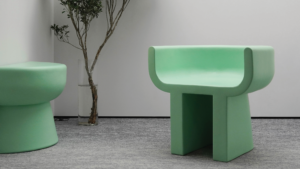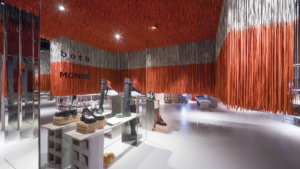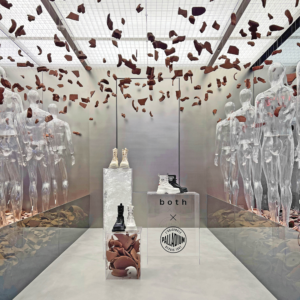Through their Shanghai-based DESFA Group, the Wang brothers bring a distinctive aesthetic to architecture and design
Did Howard Wang ’99 and Ben Wang ’01 always know they were going to end up in business together, even back in their Williston days? Um, no. The brothers, who were born in Taiwan, moved to Los Angeles for middle school before, ultimately, coming to Williston. “We played basketball and tennis together,” Ben concedes, but that was about the extent of their collaboration. Now they’re the collective genius behind DESFA Group Inc., an international architecture design firm based in Shanghai. Howard, who took an architectural drawing class at Williston before studying architecture at Syracuse University, co-founded the company with fellow architect Michael Dungca in 2010. Ben, who graduated from the University of Minnesota with a degree in general management and economics, joined as general manager in 2012. The firm is thriving and they love everything about Shanghai, which they describe as “the New York City of Asia.” Thanks to the city’s happening and diverse frontier vibe, they find inspiration everywhere for their work. They offered us a little tour through some of their favorite projects.

1. ANCIENT CHAIR, NEW MATERIALS
DESFA’s furniture brand is called SEdA, Spanish for silk, for the Silk Road that historically connected the East and the West—a cultural fusion that combines Confucianism and Buddhism with modern architectural theories, and that is everywhere evident in their design choices. The inspiration for this chair’s shape came from an ancient drinking cup, but it’s made from a contemporary rubberlike material—the same material that the client, a Xi’an shoe manufacturer, uses in its products.

2. FLOATING WALL OF SHOELACES
Over 30,000 of the client’s own shoelaces are used to create a floating room where the shoes themselves are displayed. The DESFA designers combine everyday traditional objects, like concrete blocks and bricks, with contemporary and recycled materials—a mix that characterizes their design aesthetic. Howard’s attraction to traditional forms was influenced by his study of calligraphy, which he began learning at the age of 4, from monks at a nearby temple.

3. LIGHTING THAT TELLS TIME
For a tech client in Taiwan, DESFA designed a clean, minimal interior that includes lots of metal and state-of-the-art lighting that changes color over the course of the day to cue workers to different moments. Howard’s sensibility was hugely influenced by the “Glass House” architect, Philip Johnson, with whom he worked in New York before starting his own company.

4. PLEASE HAVE A SEAT—ANYWHERE
DESFA designed the workspace around the repetition of flexible seating—the kind you might expect to find in a library. Nobody’s space is assigned, and staff choose their day’s spot each morning. In lieu of a designated desk or office, lockers give each employee a place to keep their belongings. Black, white, and gray are Howard’s favorite colors to work with, since they create a basic canvas for other colors to pop against. Asked what other colors are in his own home, Howard hesitates before saying, “Green. I’ve got plants.”

5. ELEVATOR TO INFINITY
The darkness of the elevator creates intimacy among the workers, while tinted mirrors create a feeling of expansiveness—what Howard Wang describes as “an infinity effect.” The light, which changes color, echoes the shape of the company logo. DESFA does everything from urban planning and corporate architecture to private residences, interior design, and custom furnishings, and prides itself on choosing environmentally friendly building materials.

6. TRANSPARENT ARMY OF XI’AN
In a window display designed for the same company, transparent mannequins are reflected in multiple mirrors to create a kind of futuristic echo of the famous terracotta army of Xi’an, a 210 BCE collection of more than 8,000 clay statues. This interactive space is open to customers, thereby blurring the line between display and experience.

